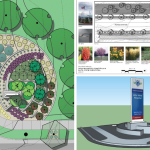 Architecture is often associated with practical design and functionality, but each and every building is a work of art in its own special way. Even the most creatively designed structures are built for a reason, but up until recently, it had more to do with a designer’s whim, then an actual economically-based purpose. But thanks to a new generation of architects and designers, that is beginning to change.
Architecture is often associated with practical design and functionality, but each and every building is a work of art in its own special way. Even the most creatively designed structures are built for a reason, but up until recently, it had more to do with a designer’s whim, then an actual economically-based purpose. But thanks to a new generation of architects and designers, that is beginning to change.
Engineering.com recently covered this topic in-depth, taking a close look at a handful of American Universities that are designing their campuses in an effort to encourage creativity, entrepreneurship and business. While it might sound like an impossible goal, early research is proving that unusual architecture can encourage students and professors to interact in different, more engaging ways, an evolution that may even change the way major cities are eventually constructed.
It’s also interesting to note that this new design trend places a heavy emphasis on collaborative work spaces. For decades, American students have been taught that individualism comes above everything else, and success depends on cutthroat competition rather than working together. As the business world becomes more globalized, and trade and language barriers continue breaking down, working with people from all over the world is sure to become more common.
Building design isn’t just changing for the better, it’s laying the early foundations for an entirely new world.








